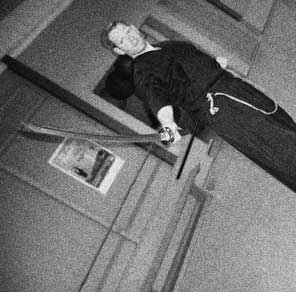My first Iaito.
All Iaidokas remember buying their first Iaito. Then you really entered the ranks of swordsmen. The training gets serious. Sure, a Bokken (wooden sword) is a respectable weapon that even a ›sword god‹ like Musashi used. ›Right‹ Iaido practice is not possible without a sword. The selection of suitable armament usually takes place according to the following criteria:
- price
- look
- length
And gladly in the order listed above. First of all, that’s understandable. Iaitos have become quite expensive due to the import modalities, but they also do not necessarily exceed the price range. Every sport has a financial cost to practice. Some less (e.g. jogging), some more (e.g. surfing). Nevertheless, cheap offers are also used, which in certain cases must be warned of urgently! Sounds boring, but it is better: the appearance is at the bottom of all selection criteria.
Just the length
The length of an Iaito is selected based on experience or value tables. One rule is known to hold the sword sideways by the handle. The tip must not touch the ground, then the blade length is correct. This rule of thumb is unreliable! It is best to try it out with various Iaitos that you borrow from nice club members. If you swing with it, even a beginner will realize the enormous effects the length of the sword has. First of all, the length should not be excessively short and not too long. Iaitos that are too short are ›beaten‹ by the practitioner and not managed. Too long iaitos pull a practitioner’s body with them. You can see sidewards whether the upper body is swinging. Therefore, someone should be watched for a ›try-on‹, preferably their own sensei.
Iaito length and practice
The right sword length enormously determines the ›quality‹ of practicing Iaido. How do sword length and kata version come together? First of all not so much. The sword works with its weight of approximately 1 kg against your body weight of 70 kg. You can therefore swing your sword regardless of full physical involvement. KiKenTaiIchi will certainly be sought. However, even moving the sword and body at the same time reveals little about the right inner quality of a sword movement. Sword movement, physical effort and mind should merge into one. If a sword is too short and too light, a practitioner cannot meet this requirement. He doesn’t feel the soul of the sword. Here is a comparison example from everyday life: how do you move a broom with a long handle and how a hand brush?
If your sword is too heavy and too long, it is not possible to ›stay together‹ with the sword due to the acceleration forces and the resulting weight. You lose your middle. Everyday example: compare how differently you would handle a hammer and how you would handle an axe.
Conclusion
I have my own rule of thumb for determining the appropriate sword length: it should correspond to one’s stride length. However, since this rule is very imprecise, I recommend carefully (several times) trying out different sword lengths in order to find what fits with your own requirements. Be picky: the differences are small but have big consequences.
